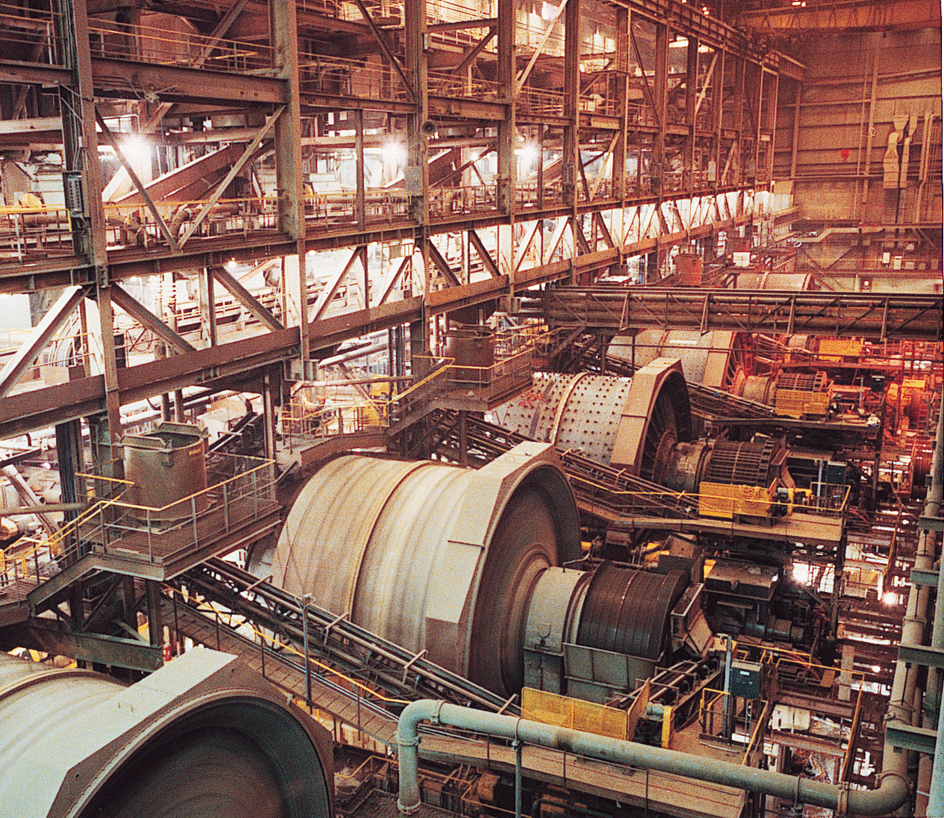Taconite << TAK uh nyt >> is an extremely hard rock that serves as an important source of iron metal. It consists mainly of a flintlike form of quartz called chert. The chert contains small flecks or thin bands rich in the iron oxide minerals magnetite and hematite. Taconite mined for iron ore typically contains 17 to 35 percent iron.

Taconite often forms deposits called banded iron formations. These formations consist of bands of chert containing varying amounts of iron oxide. Millions of years ago, water deposited the chert and iron oxide as layers of tiny particles called sediments. Over time, the layers of sediment hardened into rock. Large banded iron formations are found in Australia, Brazil, Canada, China, India, Russia, southern and western Africa, and the United States. The name taconite comes from the Taconic Mountains of Massachusetts, New York, and Vermont, where small amounts of the rock are found. The Mesabi Range of northern Minnesota contains enormous quantities of taconite. The range includes a belt of relatively iron-rich taconite that stretches more than 100 miles (160 kilometers) long and measures several miles or kilometers wide.
For hundreds of years, people have known that the world’s taconite formations contain large amounts of iron ore. Until the 1950’s, however, companies did not mine taconite because the rock was too hard and contained too little iron to be produced at a profit. In the mid-1950’s, scientists developed new techniques and equipment to profitably mine taconite and extract the iron ore. Taconite mining greatly increased the world’s available supply of iron.
Most taconite is mined using a device called a jet piercing machine. The machine shoots alternating streams of burning kerosene and cold water at the rock. The flame heats the taconite to about 4700 °F (2600 °C). The water then cools the rock suddenly, causing it to break apart. By repeating this process, the jet piercing machine bores holes in the rock. Workers then insert explosives in the holes to blast the taconite into chunks that can be removed.
After mining, taconite is processed to increase its iron content. First, machines crush the chunks of taconite into smaller pieces. Workers mix these pieces with water and feed the mixture into machines that grind the taconite into sand-sized particles. Magnets extract the particles that contain much iron. The iron-poor residue, called tailings, is discarded as waste material. The wet, iron-rich powder, called the concentrate, is mixed with clay in rotating steel cylinders. The sticky mixture forms marble-sized balls that contain 60 to 65 percent iron. The balls are then baked to harden them into pellets for shipping. The pellets have a more uniform size and iron content than unprocessed ore, enabling iron and steel manufacturers to process them into metal more efficiently.
See also Hematite; Iron and steel (Kinds of iron ore); Lodestone; Minnesota (The mid-1900’s).
